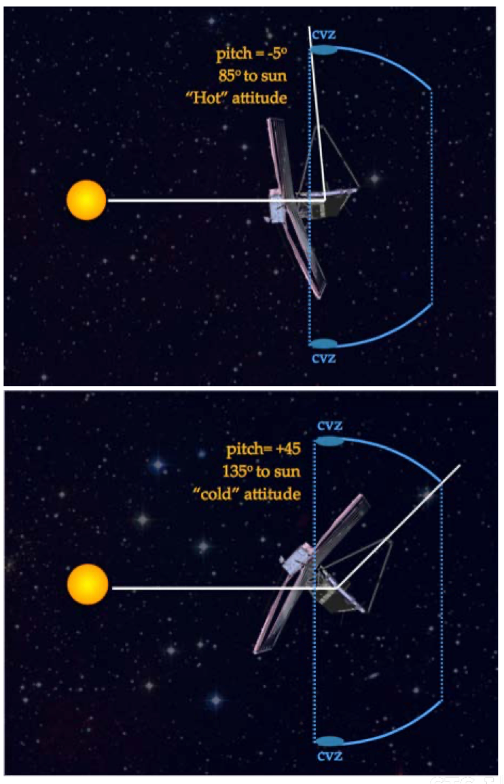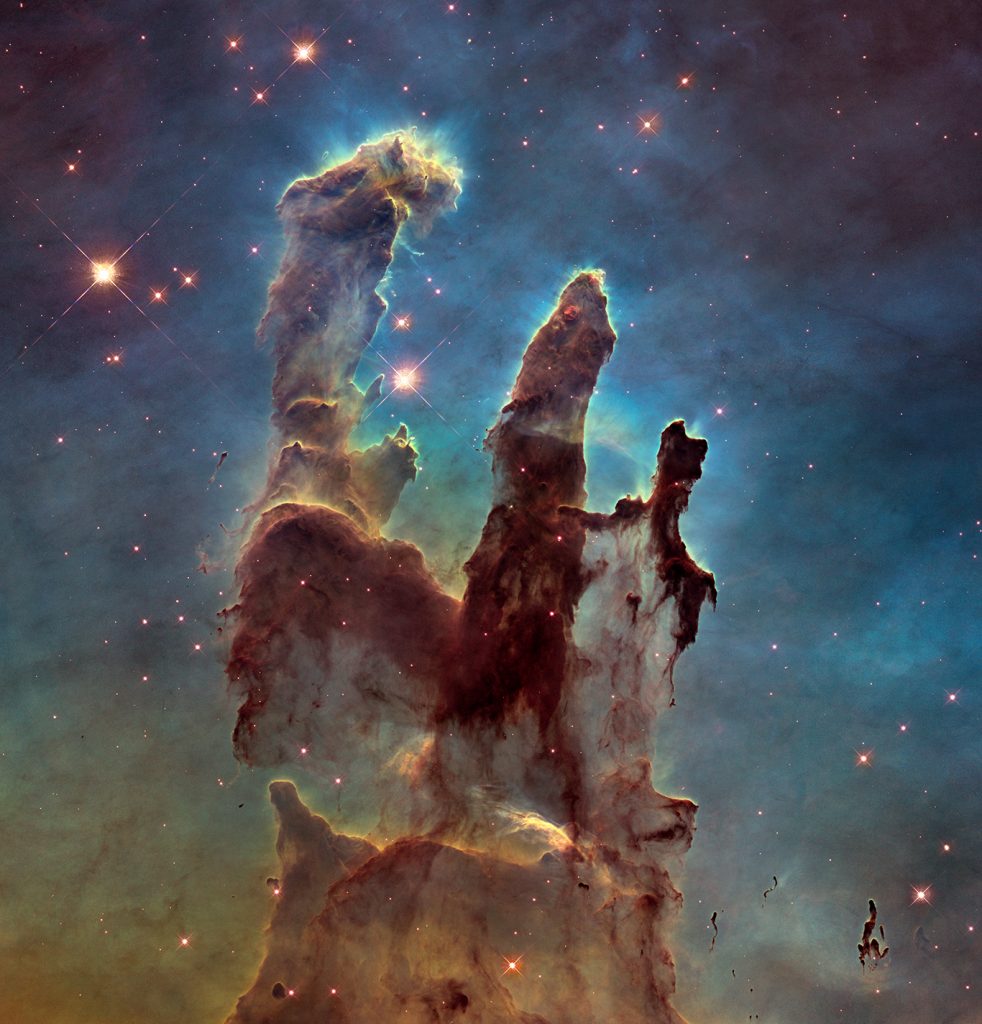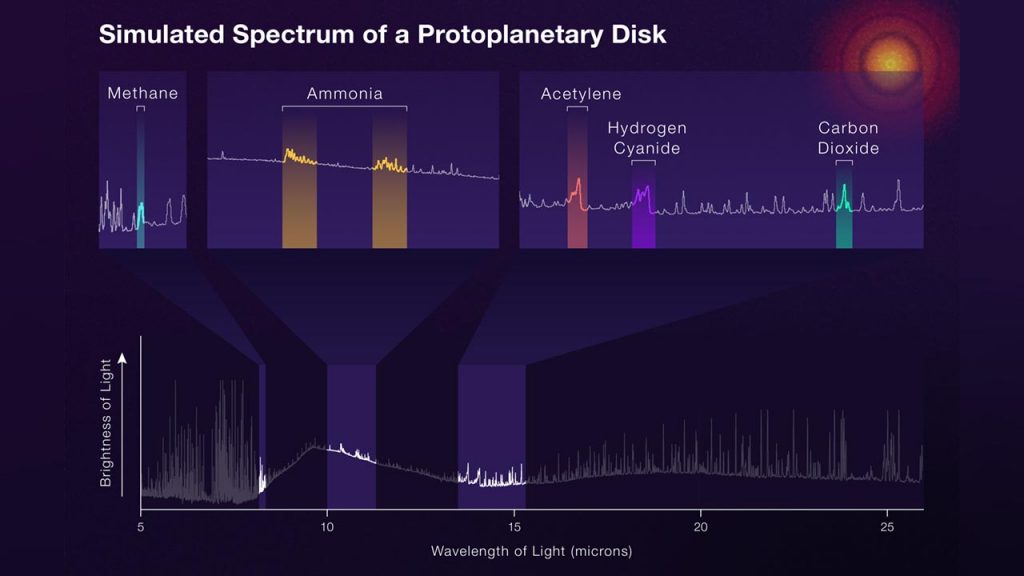With the telescope optics and instruments aligned, the Webb team is now commissioning the observatory’s four powerful science instruments. There are 17 different instrument “modes” to check out on our way to getting ready for the start of science this summer. Once we have approved all 17 of these modes, NASA’s James Webb Space Telescope will be ready to begin scientific operations!
In this post we’ll describe the 17 modes, and readers are encouraged to follow along as the Webb team checks them off one by one on the Where is Webb tracker. Each mode has a set of observations and analysis that need to be verified, and it is important to note that the team does not plan to complete them in the order listed below. Some of the modes won’t be verified until the very end of commissioning.
For each mode we have also selected a representative example science target that will be observed in the first year of Webb science. These are just examples; each mode will be used for many targets, and most of Webb’s science targets will be observed with more than one instrument and/or mode. The detailed list of peer-reviewed observations planned for the first year of science with Webb ranges from our solar system to the most distant galaxies.
1. Near-Infrared Camera (NIRCam) imaging. Near-infrared imaging will take pictures in part of the visible to near-infrared light, 0.6 to 5.0 micrometers wavelength. This mode will be used for almost all aspects of Webb science, from deep fields to galaxies, star-forming regions to planets in our own solar system. An example target in a Webb cycle 1 program using this mode: the Hubble Ultra-Deep Field.
2. NIRCam wide field slitless spectroscopy. Spectroscopy separates the detected light into individual colors. Slitless spectroscopy spreads out the light in the whole instrument field of view so we see the colors of every object visible in the field. Slitless spectroscopy in NIRCam was originally an engineering mode for use in aligning the telescope, but scientists realized that it could be used for science as well. Example target: distant quasars.
3. NIRCam coronagraphy. When a star has exoplanets or dust disks in orbit around it, the brightness from a star usually will outshine the light that is reflected or emitted by the much fainter objects around it. Coronagraphy uses a black disk in the instrument to block out the starlight in order to detect the light from its planets. Example target: the gas giant exoplanet HIP 65426 b.
4. NIRCam time series observations – imaging. Most astronomical objects change on timescales that are large compared to human lifetimes, but some things change fast enough for us to see them. Time series observations read out the instruments’ detectors rapidly to watch for those changes. Example target: a pulsing neutron star called a magnetar.
5. NIRCam time series observations – grism. When an exoplanet crosses the disk of its host star, light from the star can pass through the atmosphere of the planet, allowing scientists to determine the constituents of the atmosphere with this spectroscopic technique. Scientists can also study light that is reflected or emitted from an exoplanet, when an exoplanet passes behind its host star. Example target: lava rain on the super-Earth-size exoplanet 55 Cancri e.
6. Near-Infrared Spectrograph (NIRSpec) multi-object spectroscopy. Although slitless spectroscopy gets spectra of all the objects in the field of view, it also allows the spectra of multiple objects to overlap each other, and the background light reduces the sensitivity. NIRSpec has a microshutter device with a quarter of a million tiny controllable shutters. Opening a shutter where there is an interesting object and closing the shutters where there is not allows scientists to get clean spectra of up to 100 sources at once. Example target: the Extended Groth Strip deep field.
7. NIRSpec fixed slit spectroscopy. In addition to the microshutter array, NIRSpec also has a few fixed slits that provide the ultimate sensitivity for spectroscopy on individual targets. Example target: detecting light from a gravitational-wave source known as a kilonova.
8. NIRSpec integral field unit spectroscopy. Integral field unit spectroscopy produces a spectrum over every pixel in a small area, instead of a single point, for a total of 900 spatial/spectral elements. This mode gives the most complete data on an individual target. Example target: a distant galaxy boosted by gravitational lensing.
9. NIRSpec bright object time series. NIRSpec can obtain a time series spectroscopic observation of transiting exoplanets and other objects that change rapidly with time. Example target: following a hot super-Earth-size exoplanet for a full orbit to map the planet’s temperature.
10. Near-Infrared Imager and Slitless Spectrograph (NIRISS) single object slitless spectroscopy. To observe planets around some of the brightest nearby stars, NIRISS takes the star out of focus and spreads the light over lots of pixels to avoid saturating the detectors. Example target: small, potentially rocky exoplanets TRAPPIST-1b and 1c.
11. NIRISS wide field slitless spectroscopy. NIRISS includes a slitless spectroscopy mode optimized for finding and studying distant galaxies. This mode will be especially valuable for discovery, finding things that we didn’t already know were there. Example target: pure parallel search for active star-forming galaxies.
12. NIRISS aperture masking interferometry. NIRISS has a mask to block out the light from 11 of the 18 primary mirror segments in a process called aperture masking interferometry. This provides high-contrast imaging, where faint sources next to bright sources can be seen and resolved for images. Example target: a binary star with colliding stellar winds.
13. NIRISS imaging. Because of the importance of near-infrared imaging, NIRISS has an imaging capability that functions as a backup to NIRCam imaging. Scientifically, this is used mainly while other instruments are simultaneously conducting another investigation, so that the observations image a larger total area. Example target: a Hubble Frontier Field gravitational lensing galaxy cluster.
14. Mid-Infrared Instrument (MIRI) imaging. Just as near-infrared imaging with NIRCam will be used on almost all types of Webb targets, MIRI imaging will extend Webb’s pictures from 5 to 27 microns, the mid-infrared wavelengths. Mid-infrared imaging will show us, for example, the distributions of dust and cold gas in star-forming regions in our own Milky Way galaxy and in other galaxies. Example target: the nearby galaxy Messier 33.
15. MIRI low-resolution spectroscopy. At wavelengths between 5 and 12 microns, MIRI’s low-resolution spectroscopy can study fainter sources than its medium-resolution spectroscopy. Low resolution is often used for studying the surface of objects, for example, to determine the composition. Example target: Pluto’s moon Charon.
16. MIRI medium-resolution spectroscopy. MIRI can do integral field spectroscopy over its full mid-infrared wavelength range, 5 to 28.5 microns. This is where emission from molecules and dust display very strong spectral signatures. Example targets: molecules in planet-forming disks.
17. MIRI coronagraphic imaging. MIRI has two types of coronagraphy: a spot that blocks light and three four-quadrant phase mask coronagraphs. These will be used to directly detect exoplanets and study dust disks around their host stars. Example target: searching for planets around our nearest neighbor star Alpha Centauri A.
— Jonathan Gardner, Webb deputy senior project scientist, NASA’s Goddard Space Flight Center










